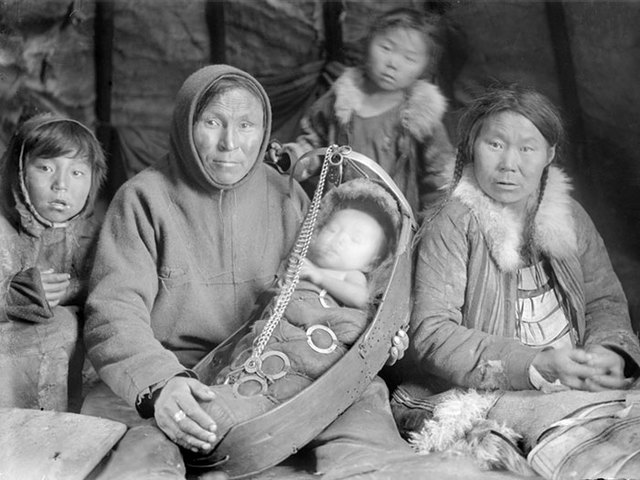How to reach us
117 Uritskogo Str.
Krasnoyarsk, RUSSIA
- e-mail:
- info@sayanring.com
- Open hours:
- Monday-Friday 10 am-7 pm
- Sat 11 am - 4 pm
- Sun - day off
Outgoing culture: indigenous people of Russia

According to official figures, 47 indigenous peoples live in Russia, numbering less than 50 thousand people. To count the smallest of them, fingers on one hand are enough. And on the verge of extinction there are not only northern peoples who spend their whole lives in difficult conditions, but also the indigenous people in quite climatically prosperous regions.
● Aleuts (Kamchatka) ● 482 people ●
The indigenous population of the Aleutian Islands. Mostly they live in Alaska in the USA, in Russia they live in Kamchatka and are included in the list of indigenous peoples of the North. The Aleuts themselves call "Unangan" or "Unangas".
Aleutian language in Russia is spoken by about 45 people. There are four dialects in the language: Western, Eastern, Bering and Attuan. The last one is extinct. One of the interesting features of the language is that there are no adjectives.
● Chulym people (Tomsk Region, Krasnoyarsk Territory) ● 355 people ●
Turkic people included in the list of indigenous peoples of the North. Chulym people live mainly in the Chulym river basin. Initially, they lived in tribal communities, then switched to territorial-Soviet communities. Traditionally, women and men have equal rights among Chulym people.
According to official figures, 44 people speak the Chulym language, according to linguists - only about 12. It is divided into Middle Chulym and Lower Chulym dialects. Experts suggest that the language will die out within 25 years. It is considered a non-written language, although in 2019 a translation of the Gospel of Mark into the Chulym language was published. It used the alphabet developed by the teacher of Tomsk State Pedagogical University Valeria Lemskaya.
● Oroks (Sakhalin island) ● 295 people ●
Ulta or Oroks - the Tungus-Manchu people, are included in the list of indigenous peoples of the North, Siberia and the Far East. They are divided into the northern group “doroneni” (“people living in the North”) and the southern group “sunneni” (“people living closer to the sun”). Most Oroks ive on Sakhalin island.
Today, a little less than 50 people speak the Oroklanguage. During its active use, the language was divided into East Sakhalin and Poronai, but now it is considered monodialectic. It is young-written - an alphabetical book based on the Cyrillic alphabet was released in 2008.
● Enets (Krasnoyarsk Territory) ● 227 people ●
There are only about 300 representatives of this Samoyed people; 227 of them live in Russia. Self-designation is "enneche", which means "man". Mostly, the Enets live on the territory of the Taimyr Dolgan-Nenets district. Their traditional occupations are deer hunting and fur-bearing animals, fishing, pack and draft reindeer herding.
The Enets language, which belongs to the Samoyed group of the Uralic languages, was long unwritten, until in 1986 Natalia Tereshchenko published a draft Enets alphabet with a forest dialect of the language in support. Today, the Enets are practically the only Taimyr northern people who do not have a legally recorded written language. Now experts continue to deal with this issue - the results of their work have already been submitted to the UN.
The source: The National Accent




